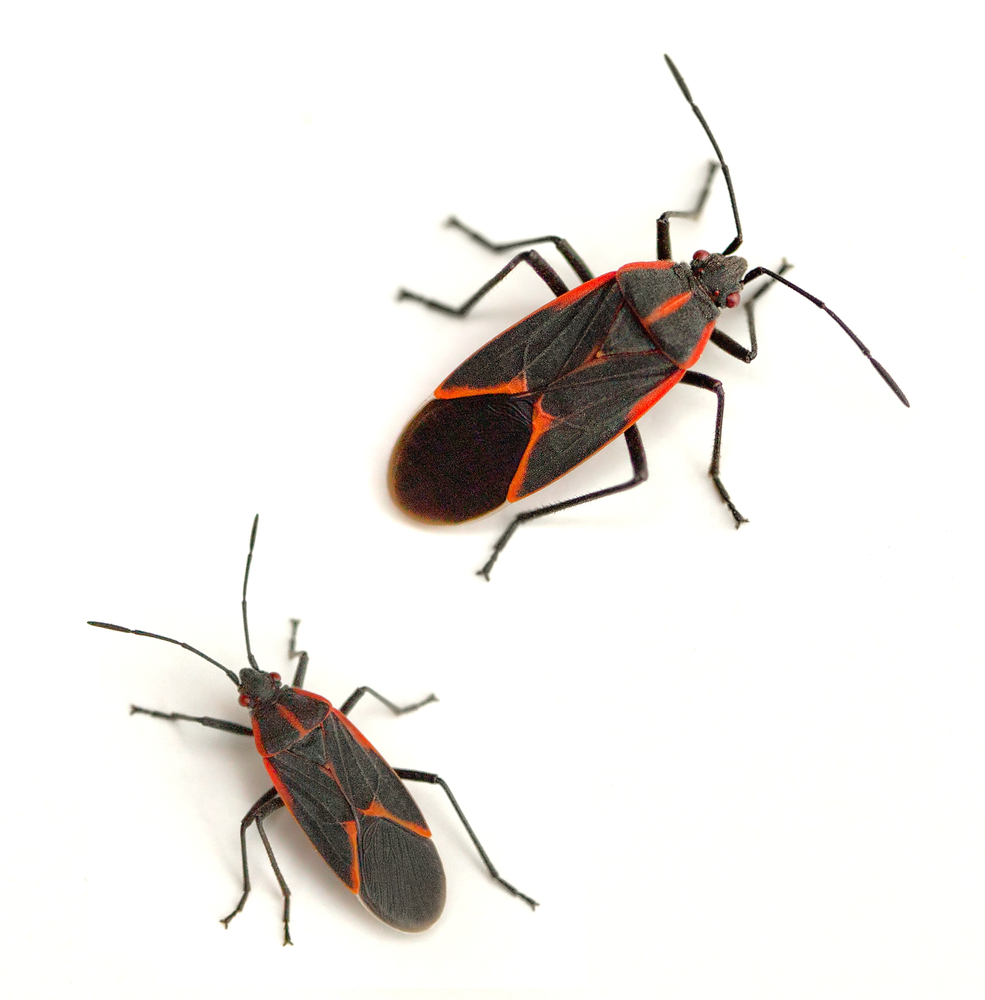BOXELDER BUGS
 Boxelder bugs, Boisea trivittatus, are familiar insects to most people. They are generally not noticed during summer, but often can become an issue when they try to move into homes during fall as they search for overwintering sites
Boxelder bugs, Boisea trivittatus, are familiar insects to most people. They are generally not noticed during summer, but often can become an issue when they try to move into homes during fall as they search for overwintering sitesIdentification
Adult boxelder bugs are about 1/2-inch long, black with orange or red markings, including three stripes on the prothorax, the area right behind the head. Their wings lay flat over their bodies. The immature nymphs are 1/16th-inch long and bright red when they first hatch. As they grow older and become larger, they are red and black. You can potentially see all stages at any given time during the summer.
Importance
Boxelder bugs are primarily a nuisance because they enter homes and other buildings, often in large numbers. When abundant, they can stain walls, curtains, and other surfaces with their excrement. Occasionally some may seek moisture and may be found around houseplants, although they rarely attack them. In the few cases when they do feed, boxelder bugs are very unlikely to injure indoor plants.

